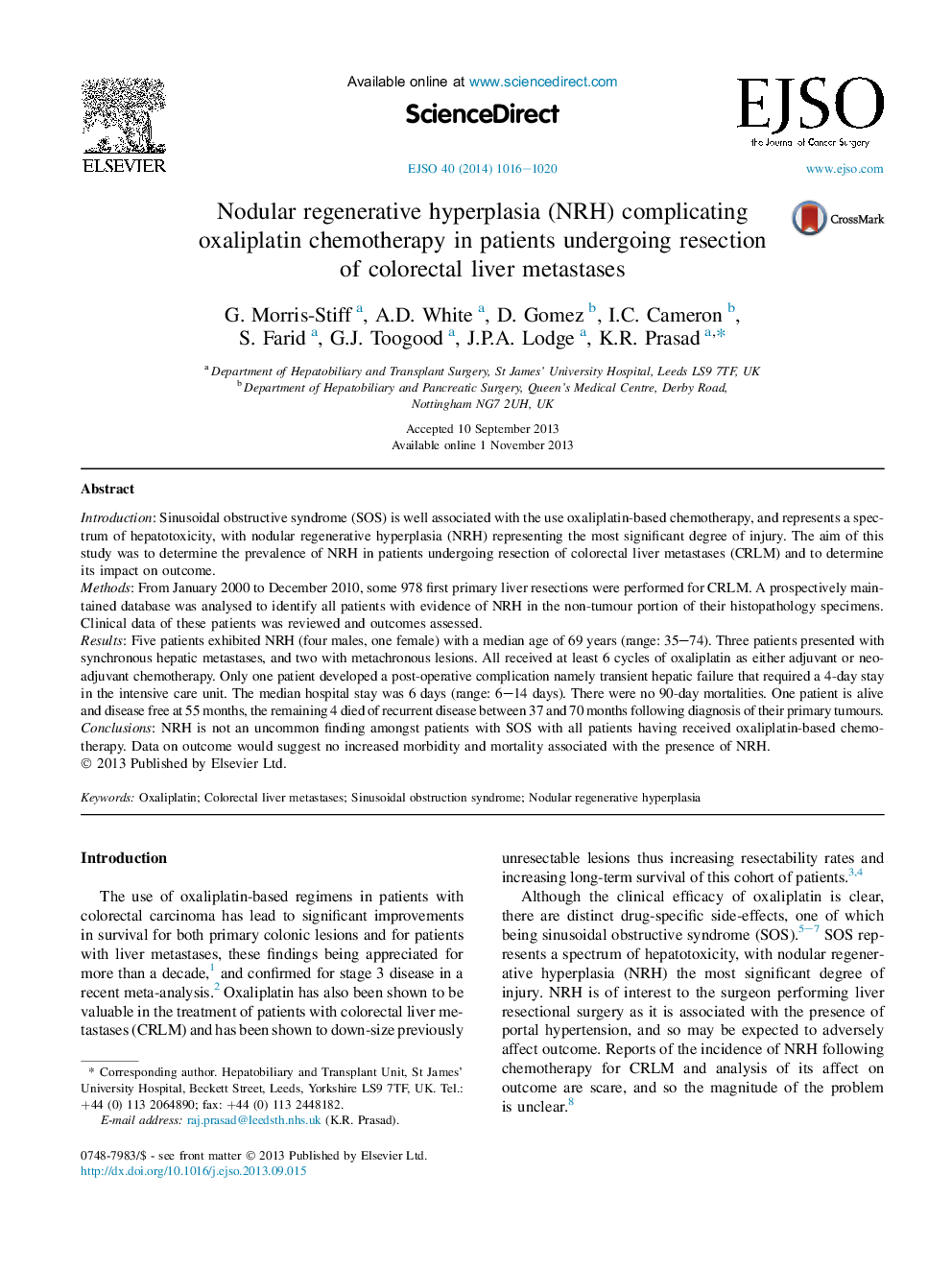| Article ID | Journal | Published Year | Pages | File Type |
|---|---|---|---|---|
| 3985097 | European Journal of Surgical Oncology (EJSO) | 2014 | 5 Pages |
IntroductionSinusoidal obstructive syndrome (SOS) is well associated with the use oxaliplatin-based chemotherapy, and represents a spectrum of hepatotoxicity, with nodular regenerative hyperplasia (NRH) representing the most significant degree of injury. The aim of this study was to determine the prevalence of NRH in patients undergoing resection of colorectal liver metastases (CRLM) and to determine its impact on outcome.MethodsFrom January 2000 to December 2010, some 978 first primary liver resections were performed for CRLM. A prospectively maintained database was analysed to identify all patients with evidence of NRH in the non-tumour portion of their histopathology specimens. Clinical data of these patients was reviewed and outcomes assessed.ResultsFive patients exhibited NRH (four males, one female) with a median age of 69 years (range: 35–74). Three patients presented with synchronous hepatic metastases, and two with metachronous lesions. All received at least 6 cycles of oxaliplatin as either adjuvant or neo-adjuvant chemotherapy. Only one patient developed a post-operative complication namely transient hepatic failure that required a 4-day stay in the intensive care unit. The median hospital stay was 6 days (range: 6–14 days). There were no 90-day mortalities. One patient is alive and disease free at 55 months, the remaining 4 died of recurrent disease between 37 and 70 months following diagnosis of their primary tumours.ConclusionsNRH is not an uncommon finding amongst patients with SOS with all patients having received oxaliplatin-based chemotherapy. Data on outcome would suggest no increased morbidity and mortality associated with the presence of NRH.
